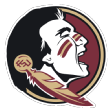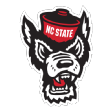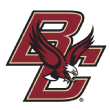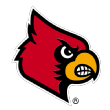ACC Atlantic preview: Welcome to Clemson's world

Winning a national title papers over a lot of cracks. Technically, the ACC Atlantic got to boast the champ for the third time in six seasons last fall, but outside of Clemson, this was the most disappointing division in the nation, mainly because Florida State fielded its worst team since the mid-1970s and Louisville fielded its worst team since the mid-1990s.
FSU should begin to bounce back this fall. Louisville might. Syracuse and NC State will have a good shot at top-30 or top-40 performances. But aside from Clemson, the average S&P+ ranking in this division was 60.7 and is projected to be 58.7 this fall. Can anyone besides Syracuse throw even a slight scare into the champs?
A quick reminder on terminology: S&P+ is the tempo- and opponent-adjusted efficiency measure I created at Football Outsiders in 2008.
Teams are listed below in order of S&P+ projections. Click here for the ACC Coastal preview.
Jump to a team:
Clemson | Florida State | NC State | Syracuse
Wake Forest | Boston College | Louisville
Clemson Tigers
2018 record and rankings: 15-0 (No. 3 in S&P+, No. 1 in FPI)
2019 S&P+ projection: 11.0 wins (No. 3)
2019 FPI projection: 12.3 wins (No. 1)
Strength: I can't pick just one. Dabo Swinney's program has won two of the last three national titles. The Tigers do just a few things right. Let's see, they have ...
- Maybe the best program culture in the country, as created by Swinney and his low-turnover coaching staff.
- The most high-ceiling passing game in the country with quarterback Trevor Lawrence throwing to wideouts Tee Higgins, CFP hero Justyn Rossand Amari Rodgers.
- Running back Travis Etienne and his 8.1 yards per carry toting the ball behind a line with at least three all-conference contenders.
- The most well-coached and well-structured defense, led by coordinator Brent Venables and supplemented by strong recruiting and the aforementioned culture.
- Maybe the best safety corps in FBS, led by seniors K'Von Wallace and Tanner Muse and all-world nickelback/OLBIsaiah Simmons.
We'll stop there, but you get the point.
Weakness: An inexperienced front six. We can assume that Venables & Co. will have their defense fully weaponized pretty quickly, but it still bears mentioning that the Tigers are replacing five of last year's top six linemen and six of seven linebackers.
Venables deployed an enormous rotation last year, so Clemson still has reasonably known pieces on a line led by sophomore end and All-America candidate Xavier Thomas. But the Tigers have senior Chad Smith and who-knows-what-else at LB. They'll probably be fine, of course, but it might take a bit to reach full stability there.
Opportunity: Life in the ACC. The ACC was, per S&P+, the weakest of the power conferences last year. We can assume that Florida State will be better this year, but we don't know by how much, and FSU has to travel to Death Valley. Swinney tends to keep as many cards as possible close to his vest, and with a schedule that features only two projected top-25 opponents (again, per S&P+), he'll be able to stay pretty vanilla.
Threat: The early going. You could pretty easily make the case that the two most losable games on the schedule -- a visit from top-15 Texas A&M and a road game against Syracuse, the team that took the Tigers down in 2017 and nearly did so again in 2018 -- come in the first three weeks of the schedule. Syracuse might be able to take advantage of a potentially unsettled front six; Texas A&M definitely will be able to.
Florida State Seminoles
2018 record and rankings: 5-7 (No. 71 in S&P+, No. 67 in FPI)
2019 S&P+ projection: 7.1 wins (No. 28)
2019 FPI projection: 8.1 wins (No. 21)
Strength: Defensive backbone. You could define a defense's spine as its defensive tackles, inside linebackers and safeties. The players on the edge (pass-rushers, cornerbacks) get a lot of the headlines, but a sturdy backbone can make a spectacular difference. FSU has it. Nose guard Marvin Wilson is the most proven player on the team; sophomore tackles Cory Durden and Robert Cooper could play larger roles; three senior linebackers (Dontavious Jackson, Adonis Thomas, Emmett Rice) could make an impact; and safeties Hamsah Nasirildeen and Jaiden Lars-Woodbey have high ceilings.
Weakness: Offensive line. Willie Taggart's first season as head coach got completely derailed by a sieve of an offensive front. He didn't inherit much high-end talent, and what he had immediately got hurt. Nine players started at least two games, and only one (departed center Alec Eberle) started all 12.
This was a train wreck. FSU ranked 125th in stuff rate (run stops at or behind the line) and 85th in blitz-downs sack rate. The Seminoles couldn't avoid third-and-longs to save their lives, and when they got a third-and-manageable, they couldn't convert. It all started up front.
Opportunity: A breath of fresh air on offense. The Noles finished a horrid 97th in offensive S&P+, but they get a total makeover. The ultra-successful (andobviously controversial) Kendal Briles takes over as offensive coordinator; Randy Clements is the new offensive line coach; and 2017 starter James Blackman is the likely QB. He'll have former blue-chipper Cam Akers in the backfield with him, plus dynamite deep threats Tamorrion Terry and Keith Gavin out wide.
After a couple of years of stagnation, FSU should have far more energy and tempo this year.
Threat: Morale. After years of steadiness under Jimbo Fisher, the Noles' offense began to slip in 2017, then everything slipped last year with Taggart's introduction. This could easily end up a Year Zero scenario, in which a first-year coach needs a season to figure out his staff and two-deep, then things click wonderfully in his second year. But FSU's win total has gotten worse or stagnated for five straight years. It's hard to turn a program around when it's been losing its way for a while.
Two early toss-ups (vs. Boise State in Week 1 and at Virginia in Week 3) are enormous. Win those and you're likely 5-0 when you head to Clemson. Lose and it's a full-on "here we go again" situation.
NC State Wolfpack
2018 record and rankings: 9-4 (No. 35 in S&P+, No. 33 in FPI)
2019 S&P+ projection: 7.4 wins (No. 47)
2019 FPI projection: 7.4 wins (No. 46)
Strength: Defensive continuity. Coordinator Dave Huxtable's recent defenses have been talented enough to be frustrating. The 2017 Wolfpack featured end Bradley Chubb (who lived up to his top-five draft status) and three other 2018 draftees but ranked only 38th in defensive S&P+. The 2018 defensive front held up despite the turnover, but the Pack cratered in pass defense and fell to 54th.
This year, with eight starters back, State will at least benefit from continuity. Plus, with Dave Doeren's recruiting enjoying a recent uptick, the Pack could have better depth. But Huxtable has as much to prove as his charges on the field.
Weakness: A total offensive reset. With the defense producing somewhat disappointing results, the State offense had to carry quite a bit of weight in a pair of nine-win seasons. But now it has to get used to life without offensive coordinator Eliah Drinkwitz (now Appalachian State's head coach), quarterback Ryan Finley, two 1,000-yard receivers, a 1,000-yard rusher and three all-conference linemen, two of whom were All-Americans.
There's certainly raw talent here. Sophomore back Ricky Person Jr. was a star recruit, the receiving corps has efficiency weapons in Emeka Emezie, Wake Forest-via-Oregon transfer Tabari Hinesand Thayer Thomas, and the line is still reasonably experienced. But it's going to be almost impossible to avoid a drop-off. Is the defense ready to pick up the slack?
Opportunity: A few easy wins. With ECU, Western Carolina and Ball State visiting Raleigh, the Pack should be 3-1 at worst when they head to Tallahassee on Sept. 28, and they should have had a lot of opportunities to tinker and learn in those three wins. Plus, there are only two projected top-30 opponents on the slate. If State figures some things out early on, another eight- or nine-win season could be in the works. But there's a lot to figure out on offense.
Threat: No security blanket. Over three seasons, Finley threw for 10,501 yards and 60 touchdowns. He covered up for the fact that the defense was never quite the sum of its parts and the run game was inconsistent at best. His replacement, be it sophomore Matthew McKay, redshirt freshman Devin Learyor Florida State transfer Bailey Hockman, has to figure out pretty quickly how to not only not be a liability but also cover any cracks the other offensive attrition has caused. Sounds tricky.
Syracuse Orange
2018 record and rankings: 10-3 (No. 40 in S&P+, No. 28 in FPI)
2019 S&P+ projection: 6.7 wins (No. 56)
2019 FPI projection: 6.7 wins (No. 49)
Strength: A defense that finishes. The Syracuse defense ranked a decent 39th in marginal efficiency last year, but big plays were an issue (106th in marginal explosiveness). One thing was certain, though: The timing was great.
When the Orange had leveraged you behind schedule, they took your head off (16th in passing downs marginal efficiency, 20th in blitz-downs sack rate), and when you entered the red zone, your progress stopped (26th in points allowed per scoring opportunity, 20th in success rate inside the 10). And most of the reasons for that success are back. Ends Alton Robinson and Kendall Coleman make up one of the best duos in the country, and the secondary is loaded with experience. (It also boasts maybe the best sophomore defender in the country in safety Andre Cisco.)
Weakness: An inefficient offense has a new quarterback. Syracuse had its moments on offense -- 56 points per game against early nonconference cupcakes, 500 or more yards six times -- but the Orange were pretty reliant on big plays and great field position for their points. They were inconsistent down for down (76th in marginal efficiency).
It's hard to improve your efficiency when you lose your starting quarterback (who was also your leading rusher), your top receiving target and three starting linemen. But to match last year's 10-win total, Syracuse is going to have to find a way. New starting QB Tommy DeVito was a well-regarded recruit, at least.
Opportunity: A schedule that can absorb a drop-off. Against a schedule that featured only three top-30 opponents (per S&P+), Syracuse racked up wins with what S&P+ saw as a mere top-40 team. It's the same story this time around -- Clemson and FSU are the only opponents projected higher than 47th. Syracuse could fall and still pretty easily win eight games.
Threat: The trickiest possible start for a new QB. Soft as the schedule might be overall, the kickoff is still going to test DeVito. The Orange open with back-to-back road games against Liberty and Maryland, and although Syracuse will be favored in both games, Liberty is going to take a "mid-major with a shot at a huge home upset" home run swing, and Maryland has as much or more athleticism, if not as much proven skill.
After that, Syracuse returns home to face Clemson. There are lots of potential wins on the schedule, but that's still a tricky early road.
Wake Forest Demon Deacons
2018 record and rankings: 7-6 (No. 57 in S&P+, No. 59 in FPI)
2019 S&P+ projection: 6.2 wins (No. 62)
2019 FPI projection: 6.1 wins (No. 59)
Strength: A sticky secondary. Wake Forest ranked a decent 48th in passing marginal efficiency last season, but it could have been better with any semblance of a pass rush (85th in sack rate, 117th on blitz downs). It's hard to say the cornerbacks didn't do their jobs -- Essang Bassey, Amari Hendersonand Ja'Sir Taylor combined for 32 passes defensed.
If defensive coordinator Lyle Hemphill can figure out how to dial up a bit more pressure -- end Carlos Basham Jr. is back, but he needs lots of help -- then this secondary, which also returns nickelback Luke Masterson and strong safety Nasir Greer, could be one of the league's best. And Wake is going to need whatever advantages it can find with a schedule that includes November road trips to Virginia Tech, Clemson and Syracuse.
Weakness: Horrific red zone D. Dave Clawson pulls off fantastic rebuilds wherever he goes, and he has engineered three straight bowl campaigns after Wake Forest had made only one bowl from 2009-2015. One of his biggest strengths is being able to slowly avoid extreme weaknesses, but it's fair to say red zone defense qualified as such.
Wake allowed 5.42 points per scoring opportunity (first downs inside the defense's 40) last season, 125th in FBS. The Deacs ranked 120th in success rate allowed between the 11 and the 20, 93rd inside the 10 and 118th on the goal line. With three of last year's top four linemen gone, there's nothing saying this year's defense will stiffen any better.
Opportunity: A high-continuity offense and a home-heavy early schedule. Wake hosts Utah State to start the season and hosts three ACC foes by mid-October. And while quite a few opponents will be finding themselves early in the year, Wake knows itself pretty well. QBs Sam Hartman and Jamie Newman both saw a lot of playing time last year, and running back Cade Carney and five of last year's top seven receiving targets return, including big-play sophomore Sage Surratt. Wake will be closer to its ceiling early on than a lot of opponents, and that could produce a 5-1 start or better.
Threat: Depth issues. Wake was 35th in defensive S&P+ in mid-September, but injuries at linebacker and defensive back led to a precipitous drop, all the way to 97th, before a late-year rebound. Clawson's program-building abilities are undeniable, but Wake's depth is rarely going to be a strength.
Boston College Eagles
2018 record and rankings: 7-5 (No. 63 in S&P+, No. 36 in FPI)
2019 S&P+ projection: 5.5 wins (No. 72)
2019 FPI projection: 5.1 wins (No. 65)
Strength: Explosions. Sure, the Steve Addazio era at BC will be known primarily for beefy running backs and guys being dudes, but the Eagles' biggest strength in 2018 was winning the big-play battle.
Kobay White averaged 15.9 yards per catch, and dual threats Jeff Smith and Ben Glines combined to average 17.4 per catch and 6.2 per carry. This team knew its identity (see: said beefy RBs such as 250-pound AJ Dillon) and played off it really, really well.
Granted, the base offense itself was shaky -- BC was 114th in marginal efficiency but 27th in marginal explosiveness -- and that made the Eagles an extremely inconsistent team. Still, with quarterback Anthony Brown, White and Glines all back, this could again be a scary, if still all-or-nothing, attack.
Weakness: Massive inefficiency. See above. BC had a ground-heavy offense that couldn't move the ball on the ground. Dillon's success rate (39%) was well below average, and, despite a healthy amount of meat, BC was wholly mediocre in goal-line and short-yardage situations. The Eagles could catch opponents napping, but building an offense around what you're actually good at works better.
Offensive coordinator Scot Loeffler got the Bowling Green head-coaching job this past winter, and Addazio replaced him with former Tennessee offensive coordinator and Tampa Bay Bucs QB coach Mike Bajakian. We'll see whether identity and strength match up a bit better.
Opportunity: A lack of opponents capable of punishing BC's young secondary. Turnover in the secondary tends to be immensely influential when it comes to year-to-year improvement or regression, and BC's secondary turned over pretty completely.
Four of last year's top five DBs are gone, leaving only sophomore corner Brandon Sebastian and a bunch of (mostly young) players in heavy-usage roles. The pass rush gets a reset, too. Luckily, only three of BC's 2019 opponents ranked in the top 40 in passing marginal efficiency last year -- one of which was NC State, which suffers similar turnover on offense -- and six ranked worse than 80th.
Threat: A lack of sure wins. Addazio has managed to win exactly seven games, no more and no fewer, for five of the past six seasons. It's possible he'll do the same in 2019, but that's going to require quite a few toss-up wins because, per S&P+, there are three likely wins, four pretty likely losses and five games projected to be within a touchdown.
Louisville Cardinals
2018 record and rankings: 2-10 (No. 98 in S&P+, No. 103 in FPI)
2019 S&P+ projection: 4.0 wins (No. 87)
2019 FPI projection: 4.4 wins (No. 66)
Strength: Options. Let's not sugarcoat it: Bobby Petrino's final season at Louisville was an utter disaster. The Cardinals not only collapsed offensively and defensively but also kept getting worse and worse. They lost their last four games by an average of 45 points on the way to a 2-10 thud.
Former Appalachian State head coach Scott Satterfield was brought in to clean up Petrino's mess, and the hire made a lot of sense -- Satterfield needed basically a year and a half to turn Appalachian State around in 2013-14 (in the middle of a move to FBS, no less) and built one of the sturdiest cultures in college football in Boone, North Carolina. He's got work to do, but at virtually every position on the field, he has multiple options and no guaranteed starters. It's Jawon Pass vs. Malik Cunningham at QB and a battle royale at nearly every other position. Only the WR position, with Dez Fitzpatrick, Tutu Atwell and Seth Dawkins, really boasts any proven entities.
Weakness: Last year? Pretty much everything. Louisville couldn't pass, couldn't defend the run or pass, and could run only when Cunningham (who was limited as a passer) was involved. There was absolutely nothing to lean on, and though competition and a lack of incumbents is good for establishing your culture, it's not great for immediate wins. This is a Year Zero situation -- in which a coach's first year is spent getting pieces in the right places, establishing expectations and probably losing a lot of games -- if ever one existed.
Opportunity: Extremely low expectations. Never mind wins -- all Louisville has to do is cover a few times and the Cardinals will have exceeded last year's performance. UL's collapse last year was so stark that not even Vegas could keep up. Louisville underachieved against the spread by 12 points per game in September, 20 in October and 21 in November. The Cardinals finished 1-10 against the spread. Every time Vegas lowered the bar, Louisville got worse.
Threat: You name it. Lack of proven talent. A youth movement that produces minimal building blocks. A culture change that requires a multiyear rebuild. A complete and total lack of depth (quite a few players transferred this offseason). There's no easy way back when you experience what Louisville experienced last year. Satterfield was awesome at Appalachian State, but he's got a big challenge ahead of him.











